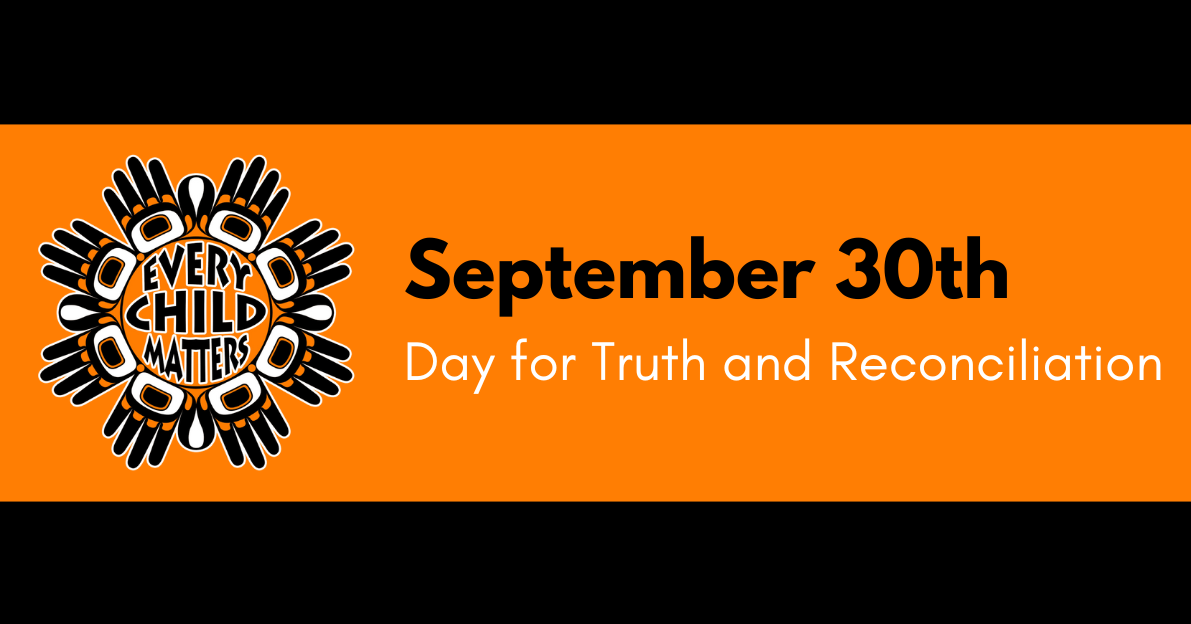
Day of Truth and Reconciliation - Orange Shirt Day
Every year, schools across Canada participate in various activities and learning focused on Orange Shirt Day and the findings of the Truth and Reconciliation Commission Report. The 30th of September was chosen for this day as it represented the time of year when the Indigenous children were collected from their homes, forced to leave their families and attend Residential Schools. The day also allows schools and teachers to settle into their school year, teacher students about Residential Schools an event for Orange Shirt Day. Additionally, by having the day fall at the start of the school year, it sets the stage for anti-racism and anti-bullying policies to inspire inclusion.
In Prairie Rose, schools planned a variety of events, activities and lessons focused around indigenous teachings and culture. Some of these included bringing in guest speaker Cowboy Smithx who is a Blackfoot filmmaker from the Piikani Nation and Kainai Nation in Southern Alberta, having Whitebear Creations work with students to create indigenous artwork, incorporating indigenous games into PE classes, cooking traditional indigenous foods, and class lessons focussed on understanding Truth and Reconciliation and the impacts of Residential Schools.
The Day for Truth and Reconciliation is about learning and understanding what happened as a result of Residential Schools. Listed below are some of the primary understandings and education shared with students about Canada's history with Residential Schools and what is currently being done to work towards reconciliation.
| Why do we recognize the Day for Truth and Reconciliation? |
| Orange Shirt Day, September 30th, is a day to honour Residential School Survivors, their families and remember those children who didn’t come home. It is recognized annually on the same day as Canada’s federal statutory holiday - the National Day for Truth and Reconciliation. |
| The vision that inspired Orange Shirt Day. |
| Orange Shirt Day is a legacy of the St. Joseph’s Mission Residential School Commemoration Project held in Williams Lake, BC. The vision for reconciliation, inspired by Chief Fred Robbins from the Esk’etemc First Nation, involved all people remembering and learning what happened at St. Joseph’s Mission Residential School, honouring and helping the Survivors to recover from their experiences and ultimately reconciling together. |
| Understanding our past history. THE INDIAN ACT |
In 1876, the Canadian Government passed a law called the Indian Act. The Act gave the government political power enabling them to control the Indigenous population by regulating their languages, traditions, customs and lands. Indigenous people were required to register themselves and live on government allotted land. “Under the act, the Canadian Government assumed control of Indian peoples’ governments, economy, religion, land, education, and even their personal lives. The act empowered the federal cabinet to overturn band decisions. The act also placed new restrictions on Aboriginal hunting rights. The government had the power to move the bands if reserve land was needed by growing towns and cities.” - Interview excerpt Phyllis Webstad |
| The Truth and Reconciliation Commission |
|
| The creation of the Residential Schools System. |
In 1879, John A. MacDonald declared “it has been strongly impressed upon myself, as head of the [Indian] department, that Indian children should be withdrawn as much as possible from the parental influence, and the only way to do that would be to put them in central training industrial schools where they will acquire the habits and modes of white men.” To assimilate children into European culture, John A. MacDonald moved a measure through his cabinet authorizing the creation of three Residential Schools for Aboriginal children. This was the start of Canada’s Residential School System. By 1931, there were 80 government sponsored Residential Schools across Canada. All aboriginal children were required to attend these schools whether they wanted to or not. This was enforced by Indian Agents. Some children were taken to attend Residential School as young as the age of four. |
| The impact of Residential School on Indigenous People. |
It is estimated that approximately 150,000 Indigenous children attended government-sponsored Canadian Residential School. At least 6,000 of those children died at Residential Schools due to variety of reasons including overcrowding, malnourishment, neglect, poor health and trying to run away. Many schools were in isolated locations across Canada. “The school was supported by a federal grant, but funding was a constant issue and often inadequate to support quality education, care of children, or facility maintenance. Hunger was common, food often poor, and sickness rampant in the poorly constructed buildings. The school attempted to destroy students’ pride in their heritage, their families and themselves. The student death rate was high, and some who died were not returned to their families.” - Written by Ordell Steen, Jean William and Rick Gilbert in the Orange Shirt Story |
| Intergenerational trauma from Residential Schools. |
The trauma created by Residential Schools has created long-term impacts that have affected family members who did not attend Residential Schools themselves. Many of the former students were unable to care for themselves or their families which created trauma passed down through the generations. Intergenerational trauma occurs when the trauma experienced by a parent or grandparent is also experienced by future generations. The results of the intergenerational trauma caused by Residential Schools have taken many forms including alcoholism, abuse, mental illness and children being forced into foster care. “We need to break the cycle and start having our people become healthier. It is an interesting and long journey.” - Former Chief Ann Louie of Williams Lake First Nations (T’exelcemc) |
Material Source: Orange Shirt Day Every Child Matters, Phyllis Webstad & the Orange Shirt Society







